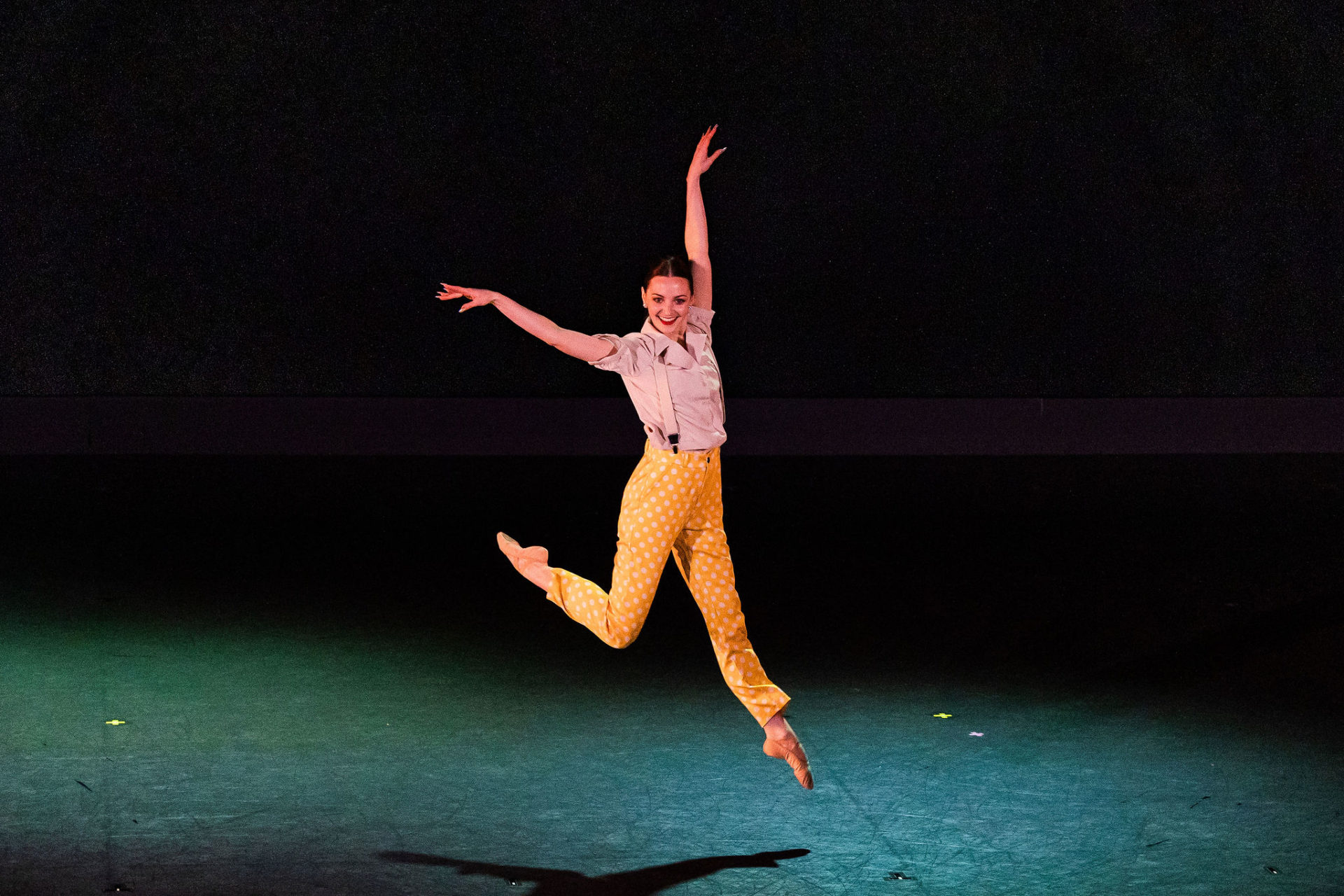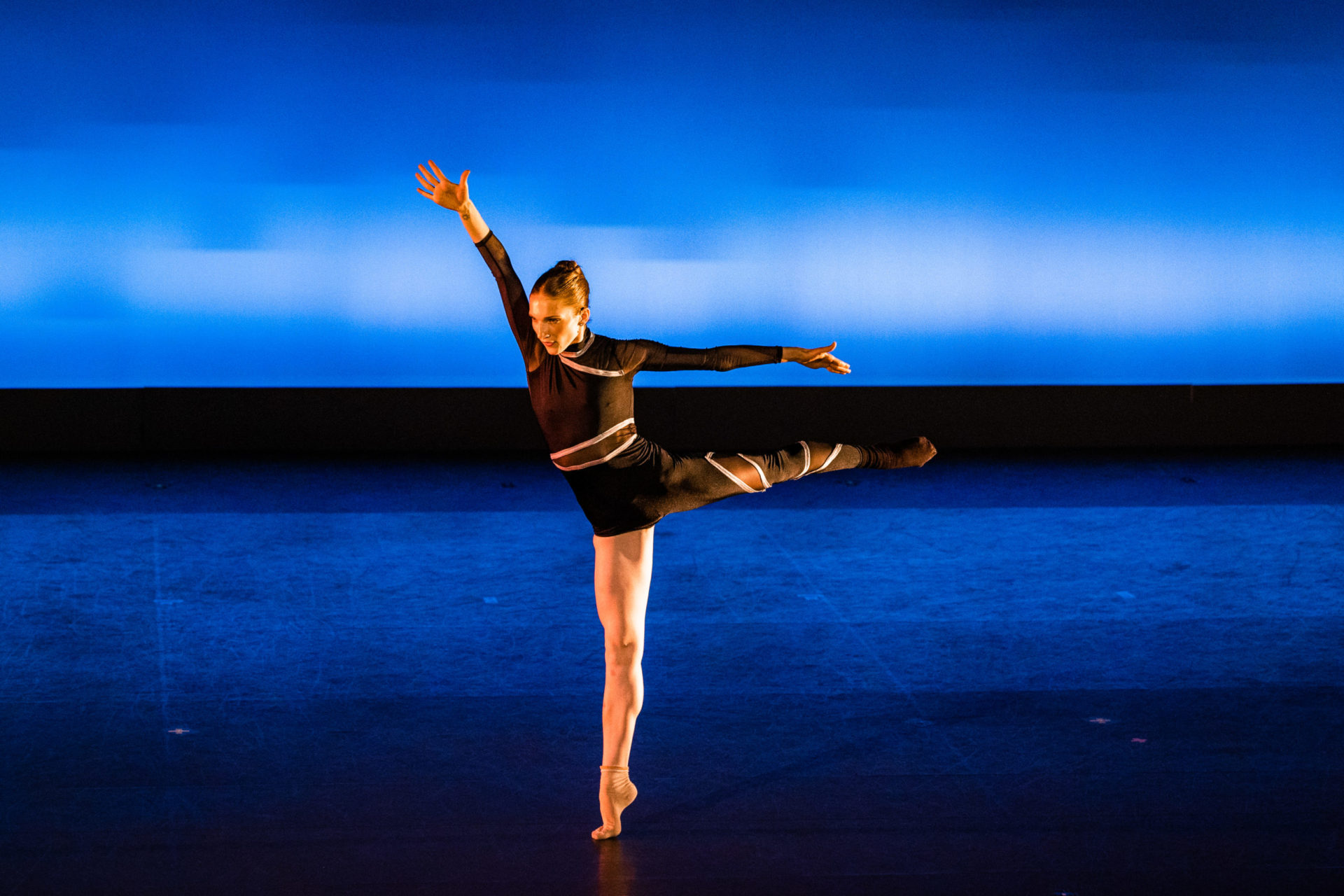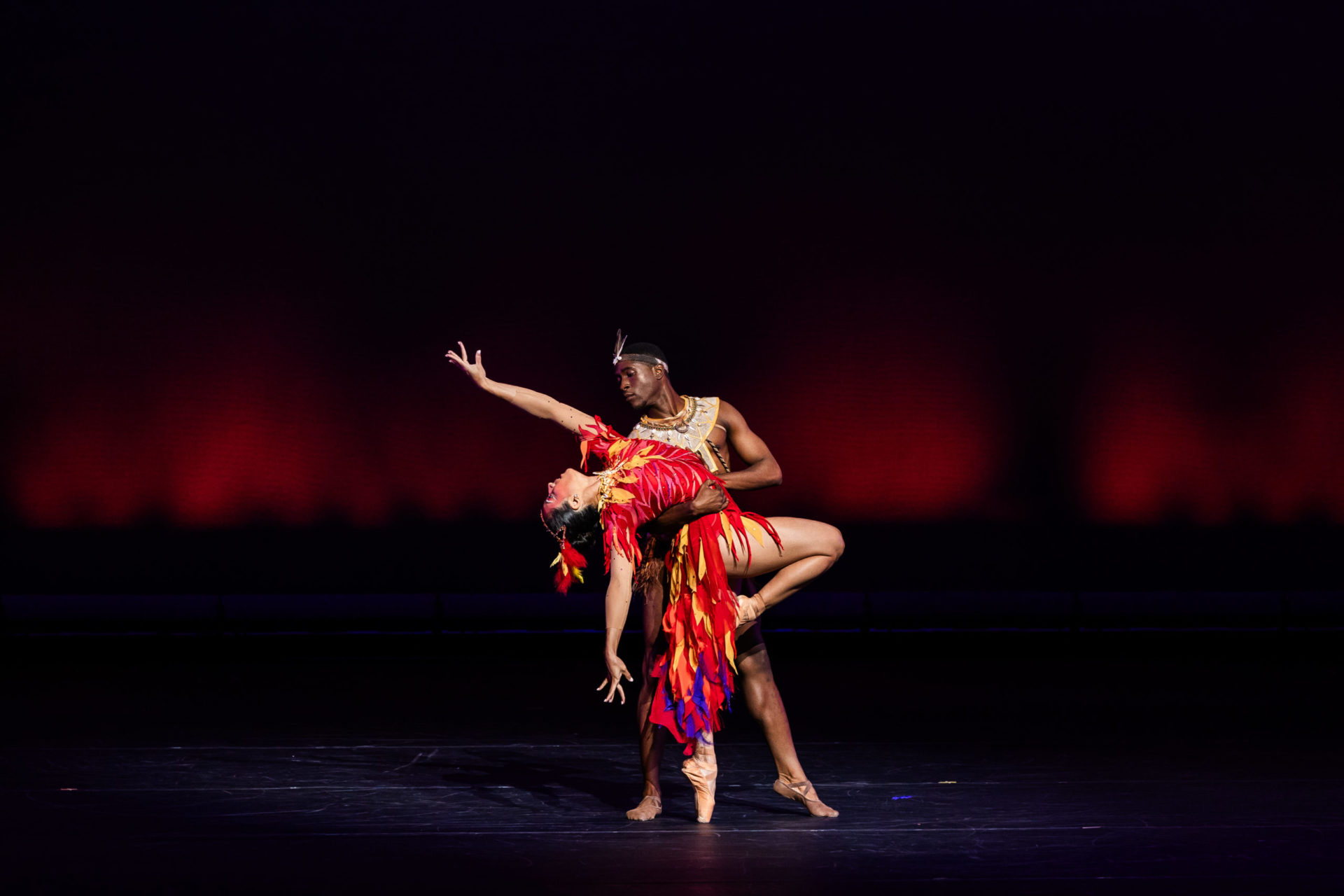From the Nashville Ballet
Taking the First Leap Into the Future: Nashville’s Inaugural Dance Festival
On Friday, July 21, 2023, Nashville inaugurated its first annual Dance Festival. Sponsored by the Nashville Ballet (NB) under newly promoted artistic director Nick Mullikin, the performance was a bold felicitous fusion of fantasy and practicality. Boldly asserting that the festival will continue in years to come, the fantasy came from the wonderfully varied choices of choreographies and music. The practicality came from both the choice of venue—the attractive, spacious Fisher Center at Belmont with its nearby parking—and timing the festival during a summer institute where significant numbers of young dancers are trained. These students lent a festive, almost sportslike atmosphere. Whenever a dancer onstage would land a skilled fouetté (a series of pirouette turns where one leg whips around) or grande jeté (big leap), you could almost hear the soccer sportscaster yell “GOOOOOOAL!” as they cheered.
This partisan enthusiasm was fine for most of the program, but when Travis Bradley’s piece “Sweet Knowledge” was performed, it became an obstruction. Bradley, an accomplished theater choreographer who formerly danced with Ballet Memphis and the Houston Ballet, successfully fused American music with the tantric concept of “memories of intrinsic sweetness,” creating the dance equivalent of the Americana music he chooses by songwriters like Dolly Parton. This multisectional group, with barefoot dancers dressed in comfortable casual clothes, is set to songs like Molly Drake’s poignant “I Remember” with a moment of stillness in the transition between sections. Misplaced audience cheers marred each of the moments.
A contrasting piece “Thick as Thieves” is one of several choreographies premiered on the program. Penny Saunders, Artist in Residence at the University of Southern California’s Kaufman School of Dance, has created a charmingly eccentric work of little Charlie Chaplin figures doing delightfully awkward steps including the Charleston before they scurry away.
Another new work, “Blue Ink” by Norbert de la Cruz, was less successful. De la Cruz, who has worked with the Alvin Ailey company and Aszure Barton—an artist performed this season at OZ Arts by the Cuban company, Malpaso—creates an interesting world of dancers in a variety of gray costumes with one character in a pale blue dress with white peter pan collar. A few intriguing gestures, like the blue-costumed dancer pushed in a chair as in a wheelchair and later dancers in a circle springing up like the spouting of a decorative fountain demonstrated choreographic imagination, but the narration needed a trained reader to match the quality of the same text sung on the recording. Nonetheless, the work promises increasing growth in the company.
More than any piece, Paul Vasterling’s pas de deux from Romeo and Juliet represented classical ballet with its formal movements and elegant choreographic lines. However, much as works like Mendelssohn’s violin concerto or a Mozart piano sonata, have styles so formal and so renowned that tackling them requires a technical perfection the dancers have not yet attained. Sometimes, however, well-framed sections with a bit more modernity worked. Examples include the initial kiss and the moment when the man is prone and the woman steps toward the v-shape of his legs, gradually leaning atop him in movements that were elegantly romantic without any hint of salaciousness. Quite lovely.
More than any piece, Yury Yanowsky’s “Circadian Rhythm” represents the experimental nature of modern dance. After decades with the Boston Ballet, this award-winning French-born choreographer has generated a thought-provoking fusion of fiercely quick and funereally slow energies, alongside an exciting blend of vigorous modern athleticism and historical steps like a 16th-century Italian movement called the “groppo [knot]” where one foot winds around the ankle of the standing leg. Then, after a section that resembled gymnastic floor exercises, the dancers simply walk off the stage as if the routine is over. Effective.
Kevin Thomas, a former company member of Dance Theater of Harlem (DTH), current artistic director of Memphis’ Collage Dance Collective, successfully reenvisioned George Balanchine’s setting of Stravinsky’s Firebird. It is a tribute to Thomas that his setting in the mythical African land of Tokoloshe was exhilarating. With Rickey Flagg II, in Gabriela Moros Diaz’ adaptation of Zulu textile design, and Lauren Philson as the Firebird herself, dressed in magically glittery red feathers, Thomas’ movements—some original, some with an occasional homage to Balanchine, like the plucking movements made famous in Maria Tallchief’s performances—were deeply satisfying.
From the total package combination of fascinating choreography, music, and technique, “When Love” choreographed by Helen Pickett was the strongest, most gratifying piece. It was impressively set to “Knee 5” from the iconic Einstein on the Beach by Philip Glass, expertly danced by Alexandra Hutchinson and Micah Bullard. Bullard, particularly, provided a model for beautiful articulation of controlled movements in approaching, lifting, and releasing his partner, a model from which all the festival’s male pas de deux dancers could benefit.
“Zero Gravity Blooms” sticks in my mind as the most imaginative piece on the program. Choreographed by Gabrielle Lamb to “For Scott Kelly, Returned to Earth” a work for harp by Mary Lattimore, “Zero Gravity” alludes to the atmosphere of Kelly, the astronaut who grew zinnias in the zero gravity world of the International Space Station. “Zero” opened with gorgeous close-knit poses like yoga postures. Dancers in pastel ombre-colored tunics floated through a melange of scenes: some featuring stretching movements in real-time with others moved in half-time; some drifting across the stage like a school of tropical fish, once prone on the stage floor with feet fluttering like fins underwater; some interweaving arms like undulating seaweed. The correspondence between movements in the ocean depths and the depths of space was captivating.
Special notice must go to Mycah Kennedy who created costumes for the Saunders, de la Cruz, Lamb, and Yanowsky. Kennedy so masterfully matched the tenor of each piece, communing with the spirit of the music and choreography that it was a bit of a shock to find that one person designed for these very different works. Kudos!
The entire program was interesting, intriguing, inventive. Any lapses in technique projected more of the promise of growth rather than ongoing bad habits seen in some young companies. This was a truly hope-infused beginning to a festival I hope will continue to vibrate with imagination for years to come.



